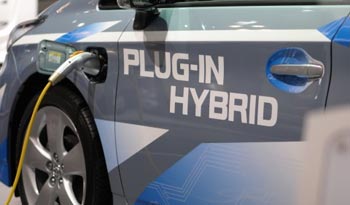
How these smart-energy systems can improve hybrid efficiency
While plug-in hybrid electric vehicles (PHEVs) are a good alternative to gas-only cars when it comes to reducing fuel consumption and greenhouse gas emissions, researchers at the University of California, Riverside’s Bourns College of Engineering have demonstrated a new kind of smart-energy system that can improve the efficiency of current PHEVs by almost 12%.

Most hybrid vehicles begin in all-electric mode until their battery has depleted and then switch to hybrid mode. The researchers noticed that this isn’t the most efficient way to combine two power sources, so they turned to blended discharge strategies, in which power from the battery is used throughout the trip.
Since plug-in hybrids combine gas or diesel engines with electric motors and large rechargeable batteries, a key component is an energy management system (EMS) that controls when they switch from ‘all-electric’ mode, during which stored energy from their batteries is used, to ‘hybrid’ mode, which utilizes both fuel and electricity.
The new strategy that the researchers demonstrated considers how to combine the two power streams in the most energy-efficient way.
“Blended discharge strategies have the ability to be extremely energy efficient, but those proposed previously require upfront knowledge about the nature of the trip, road conditions and traffic information, which in reality is almost impossible to provide,” Xuewei Qi, a graduate student in the Bourns College of Engineering’s Center for Environmental Research and Technology (CE-CERT) who led the research.
The team’s system requires trip-related information and gathers data in real-time using on-board sensors and communications devices. According to the researchers, it is one of the first systems based on a machine learning technique called reinforcement learning (RL).
“In our reinforcement learning system, the vehicle learns everything it needs to be energy efficient based on historical data. As more data are gathered and evaluated, the system becomes better at making decisions that will save on energy,” said Qi.
When the researchers tested the new energy system on a 20-mile commute in Southern California, the UCR system outperformed current binary mode systems with average fuel savings of 11.9%.
The next phase of the research will focus on creating a cloud-based network that enables PHEVs to work together for even better results.
“Our current findings have shown how individual vehicles can learn from their historical driving behavior to operate in an energy efficient manner. The next step is to extend the proposed mode to a cloud-based vehicle network where vehicles not only learn from themselves but also each other. This will enable them to operate on even less fuel and will have a huge impact on the amount of greenhouse gases and other pollutants released,”said Qi.
Story via University of California, Riverside.

Comments are closed, but trackbacks and pingbacks are open.